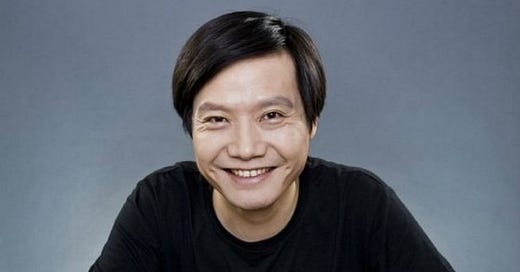Xiaomi's Art of Social E-Commerce
1.3 million smartphones, nearly 4.8 million pieces of accessories, all sold out in 12 hours.
At 22:00 on 8th April 2014, Xiaomi's total transaction amount in the latest round of "Mi Fan Festival" came to a halt at 1.5 billion yuan (USD 243.35 million), setting a new domestic record for single-day transaction amount in independent e-commerce companies. And at the same time, Xiaomi's UV of the day hit 15 million.
Before 8th April, Xiaomi had rarely been referred to as an e-commerce company.
But with Mi-fan Festival, Xiaomi exemplified its extraordinary capability in e-commerce. The fact is, by the end of 2013, Xiaomi had already become the third largest B2C e-commerce business in China by revenue, ranking only after Tmall and JD.com.
For Lei Jun, Xiaomi's CEO and founder, the enormous sale during this year's Mi Fan Festival signify Xiaomi's coming of age as an e-commerce platform. The company decided to forsake their off-line Mi Fan Festival after organizing it for consecutive 3 years, extremely focused on online promotion this time.
But Xiaomi is in many ways different from traditional e-commerce companies. Its key concepts such as peak-load sales, customization, speed delivery, social marketing and integrated eco-system are far ahead of traditional e-commerce.
Xiaomi's exceptional skills in peak-load sales allow it to launch a new promotion every week, whereas the traditional e-commerce companies' load balancing approach drags them to a bloody battle every time a promotion season arrives.
Xiaomi uses its high cost-performance smartphones as motive power to drive up the sales of peripheral products, whereas the traditional e-commerce companies still lay more emphasis on replenishing SKUs; Xiaomi drives traffic flow by social marketing, whereas the traditional e-commerce companies are still discussing increased traffic cost from Taobao.
With the integration of its unique sales model, e-commerce platform, and logistic system, Xiaomi demonstrated a whole new eco-system never seen before in the business.
It is a whole new way of thinking that will still take time for the market to fully comprehend. Here are a few lessons Xiaomi has already taught the world of e-commerce.
Hit Product Combined with Strong Peak-Load Capacity
First, let's look at an experiment on e-commerce in its early form Xiaomi performed back in 2011.
In order to make a smooth way in the opening of their e-commerce business, Xiaomi's co-founder Li Wanqiang and his team tried their hands first in a project dubbed "Xiaomi Snackbar", launching an online promotion to sell coke. At first, the price for a can of coke was suggested to be set at 1 yuan.
But Li's idea was more radical: "If we do it, we do it fiercely. Make it 0.1 yuan)!" Thus, the team sent out an internal mail in the company, encouraging all the employees to order a coke online at lunchtime, and collected feedback on shopping experience upon delivery.
This case proved to be Xiaomi's e-commerce model in its embryonic form. One of the principles is to bring out a hit product and sell it at a mind-blowing price. Xiaomi sold out of its half-million MI phones intended for the first round of this year's Mi Fan Festival in less than 15 minutes.
Its 69-yuan (USD 11.19) portable charger became a star peripheral product, topping 100,000 in sales volume.
Another principle is to launch intense sales in specific time frames, which requires a robust system that can endure the traffic at peak load.
In this year's Mi Fan Festival, the peak-load page view reached 1.5 million and the backstage system came out safe and sound.
Comparing to system breakdowns seen in previous campaigns launched jointly with Yixun and Weibo, it's obvious that Xiaomi's peak-load capacity is well beyond average, a result of constant honing by its weekly promotional sale in the past two-and-half years.
A "Just In Time" Logistic System
Keep reading with a 7-day free trial
Subscribe to China Innovation Watch to keep reading this post and get 7 days of free access to the full post archives.



